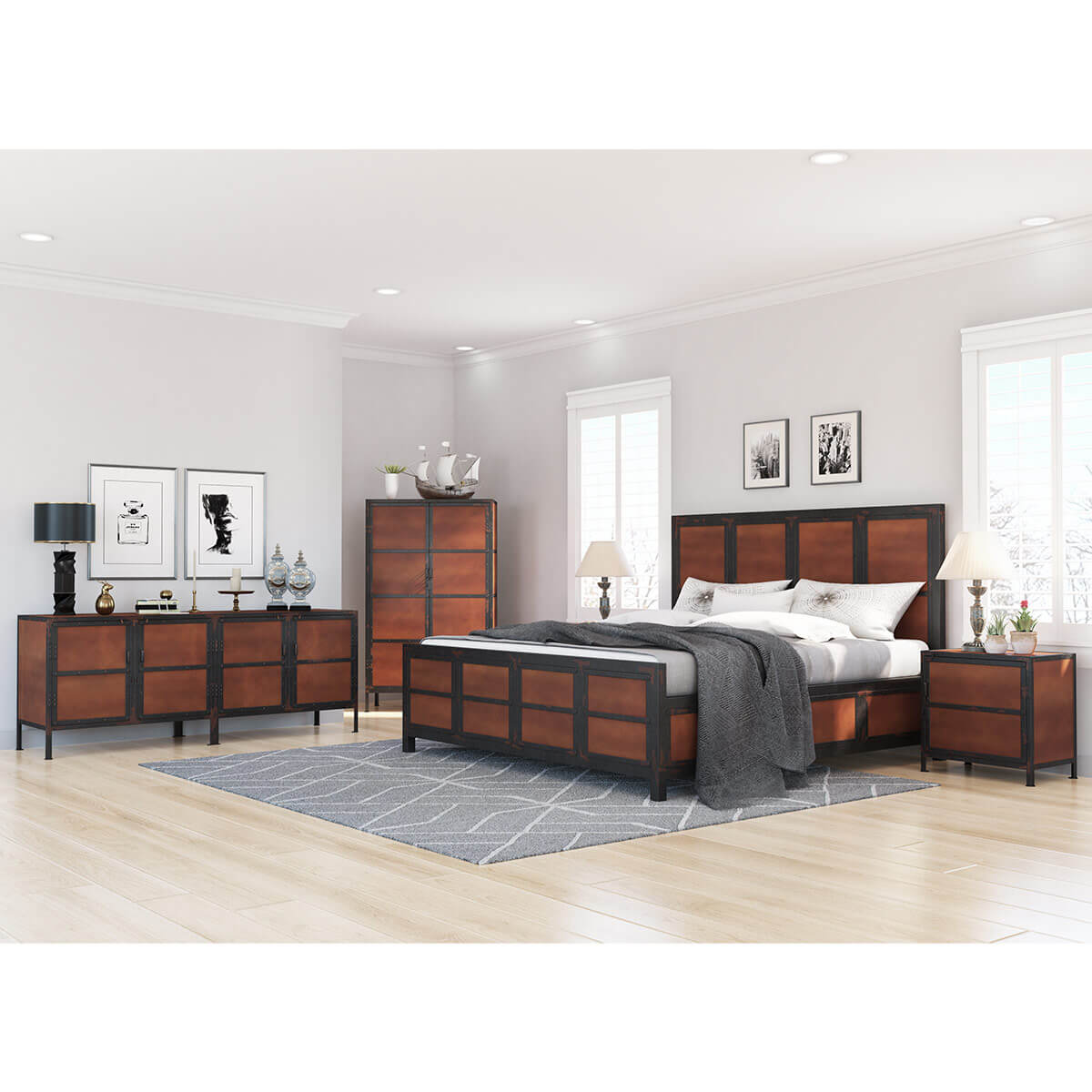Featured
When embellishing a home, picking the appropriate furnishings design plays an important role in forming the atmosphere of an area. Two of the most popular furnishings styles are standard and modern, each with its unique features.
Traditional Furnishings: Standard furnishings accepts luxuriant designs, detailed makings, and traditional kinds influenced by previous historic durations. Typical furniture has an official, advanced appearance, and the emphasis is on fine craftsmanship.
![]()
Typical Furnishings: Conventional furnishings is recognized for its usage of abundant, top notch products such as strong timber, leather, and all-natural fabrics. Standard furniture coatings have a tendency to be refined and dark, providing items a sense of weight and deluxe.
Conventional Furniture: Traditional furnishings typically makes use of much deeper, richer shades that evoke a feeling of heat and elegance. Additionally, patterns are regularly used in conventional furniture, such as floral prints, stripes, or damask, adding depth and texture to the area's style.
![]()
Traditional Furnishings: While comfort is very important in typical furnishings, it is not always the primary focus. Traditional furnishings stresses high-end and beauty, commonly including supported seating and thick furniture. The concentrate on workmanship and layout guarantees that items are not just comfy however likewise aesthetically striking. Typical furniture is developed to last and typically features heavy, tough building and construction. The comfort of standard furniture is much more about developing a welcoming and classic space than taking full advantage of flexibility and multi-functionality.
![]()
Traditional Furniture: Conventional furniture often tends to stand out a lot more in a room due to its ornate and traditional layout elements. While it can be mixed with modern components for an updated look, traditional furniture generally keeps its very own identification and can really feel leading within a space.
Standard Furniture: Standard furnishings is constructed to last and never goes out of design. For homeowners looking for enduring, ageless furniture that keeps its worth and appeal, conventional pieces are a great financial investment.
Conclusion. Eventually, the option in between modern and standard furnishings comes down to your individual preferences and the kind of ambience you want to develop in your home. Contemporary furniture is smooth, functional, and adaptable to present patterns, while traditional furniture is ageless, glamorous, and concentrated on complex details. By recognizing the key distinctions in between these 2 designs, you can much better curate a home that shows your preference, way of living, and the atmosphere you desire.
- Design and Shape. Contemporary Furniture: Contemporary furniture is known for its sleek, minimal layouts that focus on simplicity and capability. The lines are sharp and frequently tidy, with an emphasis on geometric forms and smooth, smooth surfaces. This design reflects the fads of the existing and is ever-evolving. Modern furniture can incorporate aspects from various durations, making it extremely versatile. Common functions include low-profile layouts, open rooms, and furniture that has a tendency to have a structured appearance.
Traditional Furnishings: Standard furnishings accepts luxuriant designs, detailed makings, and traditional kinds influenced by previous historic durations. Typical furniture has an official, advanced appearance, and the emphasis is on fine craftsmanship.

- Products and Finishes. Contemporary Furnishings: Contemporary furniture uses a diverse variety of materials, consisting of wood, glass, steel, acrylic, and occasionally natural leather. The coatings are frequently streamlined and modern, with high gloss, matte, and even polished metal surface areas. While contemporary furniture does consist of wood, the products often tend to be lighter and less luxuriant compared to standard pieces. Steel accents, glass table tops, and also mixed materials are typically found in modern-day furnishings items, adding to a tidy, streamlined appearance.
Typical Furnishings: Conventional furnishings is recognized for its usage of abundant, top notch products such as strong timber, leather, and all-natural fabrics. Standard furniture coatings have a tendency to be refined and dark, providing items a sense of weight and deluxe.
- Shade Combination. Contemporary Furnishings: Contemporary furnishings embraces neutral, downplayed colors, with tones like white, gray, black, and off-white commonly featured. The shade scheme in contemporary furniture is usually kept simple to allow various other design components to beam, developing a natural and balanced space.
Conventional Furniture: Traditional furnishings typically makes use of much deeper, richer shades that evoke a feeling of heat and elegance. Additionally, patterns are regularly used in conventional furniture, such as floral prints, stripes, or damask, adding depth and texture to the area's style.
- Comfort and Capability. Contemporary Furnishings: Performance is a main component of contemporary furniture. Contemporary furniture also often tends to have much less ornamentation, which allows it to mix flawlessly right into different kinds of rooms without subduing the room.

Traditional Furnishings: While comfort is very important in typical furnishings, it is not always the primary focus. Traditional furnishings stresses high-end and beauty, commonly including supported seating and thick furniture. The concentrate on workmanship and layout guarantees that items are not just comfy however likewise aesthetically striking. Typical furniture is developed to last and typically features heavy, tough building and construction. The comfort of standard furniture is much more about developing a welcoming and classic space than taking full advantage of flexibility and multi-functionality.
- Design Integration. Contemporary Furniture: Contemporary furniture is developed to fit with the fads of the moment, and because of this, it functions well in minimalist and modern-day rooms. It mixes easily with a variety of interior decoration styles, from mid-century modern to scandinavian and commercial. Since contemporary furniture embraces simpleness, it can additionally be combined with even more typical pieces to develop a diverse look. Its adaptability allows it to function well in open-plan designs and more portable living spaces.

Traditional Furniture: Conventional furniture often tends to stand out a lot more in a room due to its ornate and traditional layout elements. While it can be mixed with modern components for an updated look, traditional furniture generally keeps its very own identification and can really feel leading within a space.
- Long life and Timelessness. Contemporary Furniture: Contemporary furnishings, because of its link to existing style fads, can in some cases really feel dated as fads advance. Nonetheless, its clean, minimal aesthetic and use premium materials typically guarantee it remains appropriate for numerous years, especially when it concentrates on classic modernist components. While contemporary furniture may not have the same historical weight as standard pieces, it can still stand the examination of time via its versatility and recurring adjustment to brand-new fads.
Standard Furniture: Standard furnishings is constructed to last and never goes out of design. For homeowners looking for enduring, ageless furniture that keeps its worth and appeal, conventional pieces are a great financial investment.
Conclusion. Eventually, the option in between modern and standard furnishings comes down to your individual preferences and the kind of ambience you want to develop in your home. Contemporary furniture is smooth, functional, and adaptable to present patterns, while traditional furniture is ageless, glamorous, and concentrated on complex details. By recognizing the key distinctions in between these 2 designs, you can much better curate a home that shows your preference, way of living, and the atmosphere you desire.
Latest Posts
What Are the Distinctions Between Contemporary and Traditional Furnishings Styles?
Published Jan 17, 25
0 min read
Exist Funding Options Available for Large Secure Fencing Jobs?
Published Jan 17, 25
0 min read
Ornamental Iron Fencing for Commercial Properties: Top Uses and Benefits
Published Jan 17, 25
2 min read
More
Latest Posts
What Are the Distinctions Between Contemporary and Traditional Furnishings Styles?
Published Jan 17, 25
0 min read
Exist Funding Options Available for Large Secure Fencing Jobs?
Published Jan 17, 25
0 min read
Ornamental Iron Fencing for Commercial Properties: Top Uses and Benefits
Published Jan 17, 25
2 min read